Genre: Platformer Developer: Sega Publisher: Sega Players: 1 Released: 1995
Launch titles are seldom synonymous with quality. There are exceptions to the rule – launch titles which actually reach critical acclaim, and maintain it, for years or even decades after release – but these are few and far between. Often by design, launch titles function more as tech demos than as fully-fledged, fully-realised pieces of interactive software. As the novelty of the “next generation” fades, launch titles are finally re-examined under the only criteria that counts: what makes a game truly good. For this reason, launch titles are as fascinating to explore as they are lacklustre to play.
Clockwork Knight launched alongside the Sega Saturn in North America and Europe, and it can be summed up as a Mega Drive/Genesis platformer on steroids. It has a visual-audio presentation that 16-bit systems could only dream of, and it proves it right off the bat with an extended FMV sequence. This sequence is telling of the entire game: technically impressive and almost charming, without ever hitting the right notes. Awkward vocals accompany high tempo jazz as an assortment of toys, clockwork and otherwise, come to life. Our titular hero, also known as Pepperouchau, competes with other knights to woo a Bo-Peep kind of figure; but something goes wrong, the lights go out, and she’s whisked away by an unknown assailant. Mounting his trusty wooden steed, the clockwork knight sets out to rescue her.
That steed doesn’t figure in gameplay; the playable parts of Pepperouchau’s journey take place entirely on foot. Such is the nature of Clockwork Knight, a bunch of components that fail to achieve harmony, consistency, or any kind of sense. This is true even graphically, which still manages to be the game’s biggest strength. Clockwork Knight uses an ill-advised mix of real 3D graphics and digitised 2D sprites, most with a predictably limited number of animations. Nothing truly belongs in this world, and nothing shines in its own right: the 3D foreground is frequently bland and the 2D sprites are too clunky to wow. In earlier levels, the sheer number of colours on-screen at any time is certainly alluring, and the detail of the background is often stunning; but there are too many discrepancies. By attempting to build a composite of 2D and 3D graphics – and only half-succeeding with either – Clockwork Knight’s visuals have aged as poorly as the earliest full 3D games of its era.
The gameplay hasn’t aged as poorly, if only because the gameplay shows too little ambition and takes too few risks to feel truly obsolete. Pepperouchau runs, jumps and attacks – and that’s it. There are no frills, and considering this was, at the time, a next-generation side-scrolling platformer, that’s a real shame. The controls themselves work exactly as they should, although reliability won’t save you from occasionally confusing level design and moments of trial-and-error. Pepperouchau attacks by thrusting a key, sword-like, in front of him. He comes to a complete stop when he does this, although momentum does need to be factored in. By repeatedly pressing the B button to attack, Pepperouchau will rotate, spinning the key around and around – useful against some bosses, and one of the few ways of interacting with the game world – but like the standard attack, this is stationary and leaves you vulnerable. With time, players can learn how to attack with pinpoint accuracy, but the results are rarely truly satisfying. It’s also entirely likely that the game will end before you’ve actually had a chance to hone your skills.
Clockwork Knight features a total of 13 levels, each around five minutes long. These are divided across four different zones: Betsy’s Room (the girl’s room), Kevin’s Room (the boy’s room), Kitchen, and Attic. Not a lot has been done to take advantage of these domestic environments, as seen from a miniature perspective. Kitchen is the most inspired of the bunch, with sinks that drain and refill, angry chicks only halfway out of their (free-range?) eggs and a general scattering of everyday culinary items. And Kevin’s Room features toy train tracks winding far into the background, which looks good and adds credibility to the setting, even if the actual level is no more exciting than the rest of them. The action plays out against music best described as a cross between country and jazz, which earns the odd distinction of getting stuck in your head for hours without being especially enjoyable.
Boss fights are the highlight of Clockwork Knight’s gameplay, one at the end of each zone, plus a final boss at the very end. Once again, the visual design here is hit-or-miss: a battery-operated, Transformers-esque robot is the most satisfying, conveying an appropriate level of threat as it marches slowly towards Pepperouchau or drops smaller enemies from above. On the other hand, there’s a monocle-wearing doll, rendered in 2D, and his oversized top hat, rendered in 3D. The combination makes for satisfyingly unpredictable attack patterns, but it also demonstrates just how ugly the game can be. There’s also another robot, and another doll, and while they do play out differently, it’s bizarre that the developers couldn’t find truly unique designs for such a small number of bosses. The final boss is the best of the entire game: an angrily animated television with four Doc Ock-like arms. Like the rest of the bosses, there’s enough room to fight at your own pace, making risk equally as rewarding as caution. But like the rest of the game, there’s no real conviction behind it.
To name the most obvious of a hundred examples, Sonic the Hedgehog is so designed that even the most cynical gamer could, from the very start of Green Hill Zone, believe in this world, which has enough thoughtful charm to feel real. Clockwork Knight fails to sell such an illusion. There’s an eerie isolation throughout the game – no humans anywhere to be seen, and the only friend our hero interacts with for his whole journey is a Genie-like perfume bottle who tries to get him to gamble his coins away. Sonic the Hedgehog has small animals bouncing happily off-screen when liberated from their mechanical prisons: Clockwork Knight has no such vibrancy, only the Christmas cracker-like snap when an enemy is destroyed. This dreamscape that’s presumably meant to be halfway joyous is lacking the warmth to convey it. The characters might only be toys, but if they magically come to life, then so should the world they inhabit.
In describing Clockwork Knight, I’ve had to rely on some pretty negative language. This is entirely appropriate: but is the game truly bad? Absolutely not. I’d be genuinely surprised if anyone who’s ever played it decided it was a trainwreck. But I’d be just as surprised if, outside childhood nostalgia or next-generation novelty, anyone ever loved it, either. Candy-coloured visuals and hyperactive music don’t make up for Clockwork Knight’s inherent lack of soul; and without soul, it’s just another platformer, one which goes through the conventions of the genre like a checklist. And what do you get for completing the game? A cliffhanger setting up the sequel. This, I think, says it all, and it’s made all the more maddening by the pervasive lack of ambition. As a launch title for a console in desperate need of its mascot, Clockwork Knight utterly fails to pick up the slack.
Perfection is rarely achieved at the start of a console’s lifespan, if it’s ever achieved at all. The best launch titles know this, and home in on maybe one or two design choices: one or two choices that, if executed well, truly separate the next generation from the previous. Clockwork Knight has only its flawed graphical capabilities to show for itself, and a selection of boss fights that, like the game itself, are over too soon. Perhaps the kindest thing I can say about it is that the original Japanese release took place a full year before the launch of Toy Story, proof enough that the game was never a cynical cash-in on one of the biggest money-makers at the time. But twenty-five years later, it’s not hard to see why one IP spawned a universally-loved franchise, and the other did not.

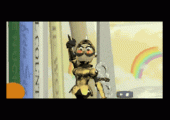
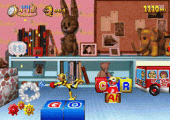
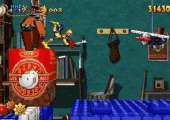
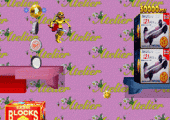
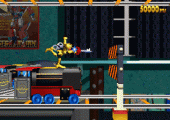
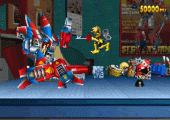
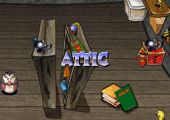
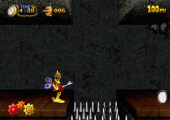
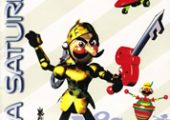
Recent Comments